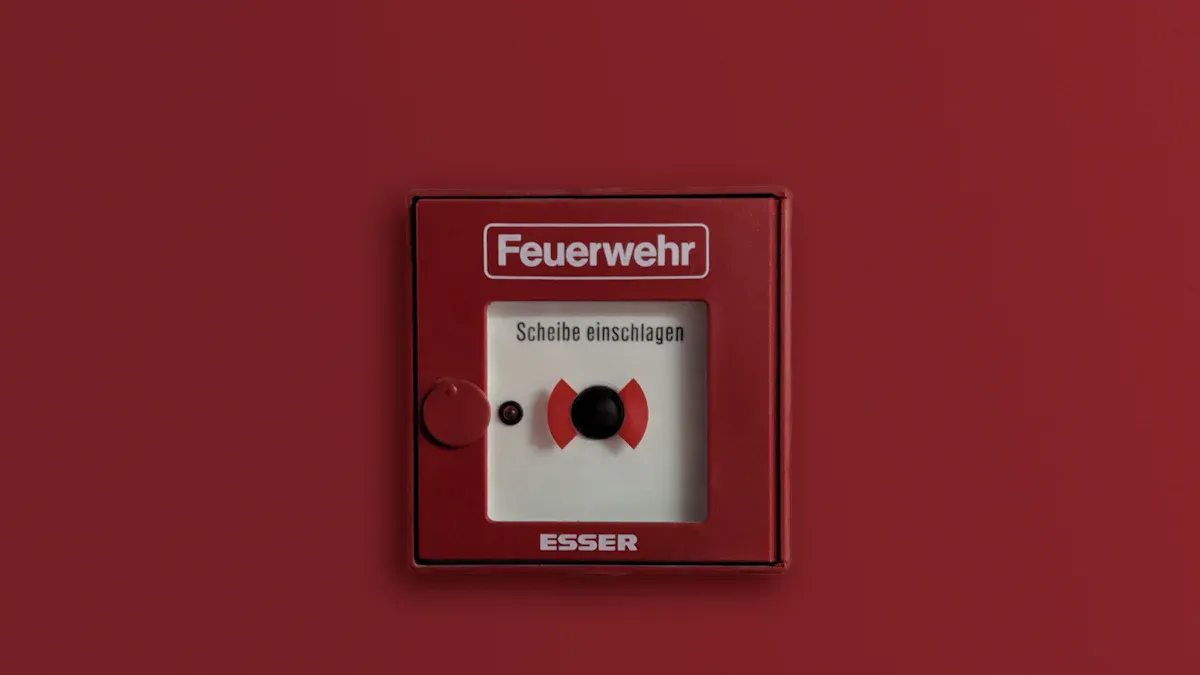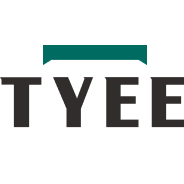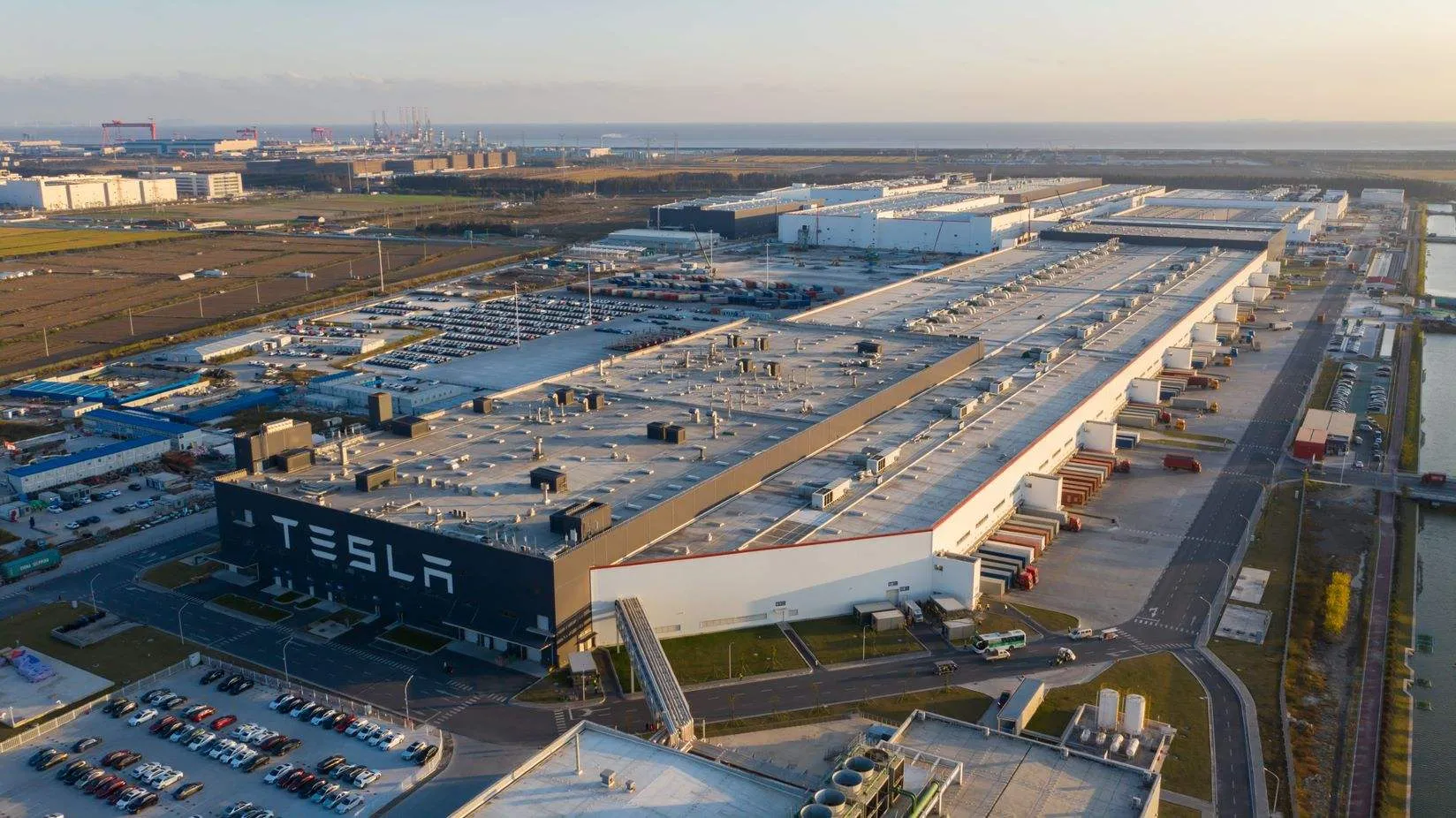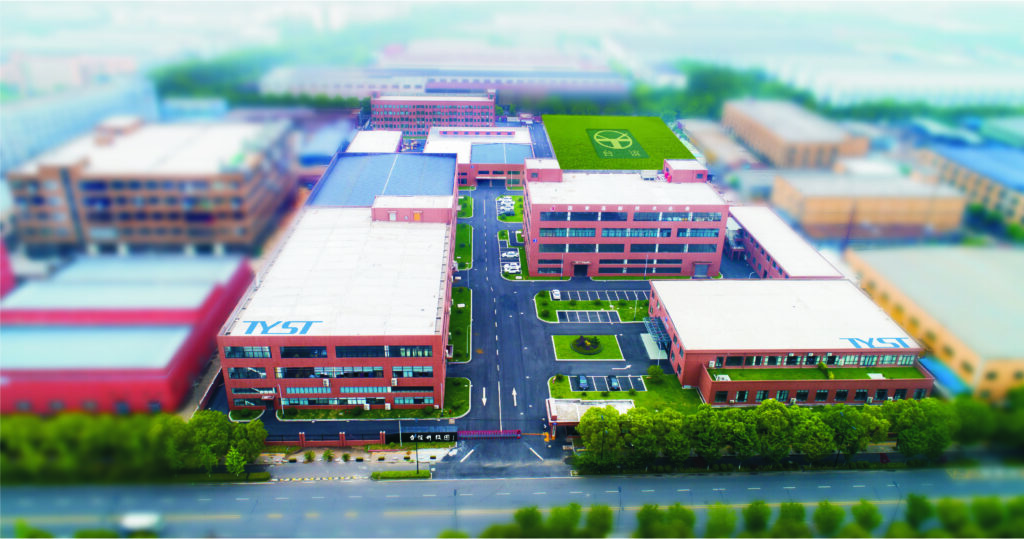
Fire alarm systems play a crucial role in ensuring safety in schools and hospitals. In hospitals, the likelihood of a fire can reach 82% over a span of 100 years. Reliable fire safety systems, like those from tyee, operate around the clock to provide protection. Schools also rely heavily on these systems, with only four injuries reported in 1,000 fires in the UK. Innovative designs from tyee are engineered to detect fires swiftly and prevent them from spreading. These advanced systems are particularly effective in safeguarding individuals who require extra care. Tyee’s tailored solutions address unique challenges, ensuring schools and hospitals remain protected from fire hazards.
Key Takeaways
-
Fire alarms are important for keeping people safe in schools and hospitals during emergencies.
-
Detecting fires early helps people leave faster, lowering risks and saving lives in busy places.
-
Special fire alarm systems help organize evacuations with clear alerts and fewer false alarms.
-
Checking and fixing fire alarms often is key to making sure they work and follow rules.
-
Teaching staff how to use fire alarms helps everyone know what to do in a fire.
-
New fire alarms use smart technology, like IoT and AI, to find fires faster and respond better.
-
Picking a trusted fire alarm company, like Tyee, gives you good systems made for your needs.
-
Planning for future changes in fire alarms keeps buildings safe as they grow and change.
Why Fire Alarm Safety is Important in Schools and Hospitals
Keeping Vulnerable People Safe
Fire alarms are vital for protecting people in schools and hospitals. These systems detect fires early, giving time to act quickly. Patients in hospitals may have trouble moving or need special care. They depend on fire safety plans to stay safe. Kids in schools might not know how to evacuate properly. This makes fire alarms very important for their safety.
Studies show that people with mobility issues face higher risks in fires. Special fire alarms, like those from TYEE, help by using advanced technology. Programs that give smoke alarms to low-income families show how prevention saves lives. These efforts lower the chance of injuries and keep vulnerable groups safer.
Helping Evacuations Run Smoothly
Good fire alarms make evacuations safer and more organized. In schools, alarms help large groups of kids leave quickly and calmly. Hospitals have extra challenges because patients often need help to evacuate. This makes reliable fire alarms even more necessary.
Custom alarms improve evacuation by giving clear sounds and lights. Research shows faster fire detection leads to quicker, safer evacuations. In hospitals, alarms can connect across buildings for better coordination. They also reduce false alarms, keeping focus during real emergencies.
|
Benefit |
How It Helps |
|---|---|
|
Faster Fire Detection |
Alarms find fires quickly, helping people evacuate in time. |
|
Better Evacuation Organization |
Clear alerts make it easier for everyone to leave safely and in order. |
|
Shorter Emergency Response |
Quick alarms help emergency teams arrive faster to control the situation. |
Reducing Damage and Interruptions
Fire alarms save lives and protect property from damage. Early fire detection helps staff stop fires before they spread. Schools can save important items like books and computers. Hospitals can protect medical tools and patient records while continuing care.
Fire alarm systems (FDAS) are proven to limit damage by acting fast. They help contain fires early, preventing bigger problems. Following fire safety rules also keeps schools and hospitals compliant and safe. Advanced alarms, like TYEE’s, work with building systems to improve safety and efficiency.
-
Early warnings from FDAS save lives and reduce damage.
-
Better detection lowers false alarms, keeping things running smoothly.
-
Following safety guidelines ensures a secure place for everyone.
Fire alarms are key to saving lives, keeping evacuations orderly, and reducing damage in schools and hospitals. By using trusted fire safety systems, you protect people and valuable resources.
Unique Challenges in Schools and Hospitals During Fire Emergencies
High Population Density and Limited Mobility
Schools and hospitals have many people, making fire emergencies harder. Students gather in classrooms, halls, and cafeterias, creating crowded spaces. Hospitals also have patients, visitors, and staff in different areas. Crowded places can slow evacuations and raise risks during fires.
Studies show crowded areas make fire rescue slower and more dangerous. Rescue workers face delays due to blocked paths and tricky layouts. In hospitals, patients in critical care cannot move on their own. They need special equipment and help to evacuate safely. Fire safety systems must handle these challenges well.
Building design and evacuation plans are very important. Research shows phased evacuations in tall buildings don’t always save time. Adding ramps and accessible features can speed up evacuations by 30%. These changes help everyone, including those with mobility issues, leave safely during fires.
Tip: Practice fire drills often to find problems and improve plans.
Evacuation Challenges in Healthcare Facilities
Evacuating hospitals during fires is especially hard. Patients rely on staff and machines, making quick movement difficult. Critical care units and operating rooms need extra care during evacuations.
A study shows communication and leadership are key for hospital evacuations. Trained staff and enough rescuers make evacuations faster. Another study from New Zealand found evacuation times depend on the type of hospital unit. Intensive care units take longer because patients need more help.
Hospitals also have extra risks like oxygen tanks and flammable items. Fires cause 40% of hospital threats, so being ready is vital. Advanced fire alarms, like TYEE’s, connect buildings for better teamwork. These alarms help hospitals save lives and reduce problems during fires.
|
Study Title |
Key Findings |
|---|---|
|
Fire safety status and evacuation of medical facility considering elevated oxygen concentrations |
Good communication and enough rescuers make evacuations faster. |
|
Decoding Hospital Evacuation Drills: Pre-movement and Movement Analysis in New Zealand |
Evacuation times depend on unit type and patient needs. |
Addressing the Needs of Children and Patients with Disabilities
Children and people with disabilities face big challenges during fires. They often need extra help to evacuate safely. For example, kids with disabilities may lose care and face health problems during disasters.
Emergency workers sometimes lack training to help these groups. This can lead to poor services during emergencies. The Americans with Disabilities Act says people with disabilities must get equal emergency help. Schools and hospitals must follow these rules to keep everyone safe.
Certain strategies can help vulnerable groups during fires. Visual and sound alarms help people with hearing or vision issues. Evacuation chairs and trained staff help patients with mobility problems leave safely. Advanced fire alarms, like TYEE’s, offer solutions for these needs.
-
Kids with disabilities need extra care during emergencies.
-
Emergency workers often don’t know how to help them.
-
Laws require equal emergency help for people with disabilities.
By solving these problems, schools and hospitals can be safer for everyone. Special fire safety systems and trained staff protect vulnerable groups during emergencies.
Key Components of Fire Alarm Systems
Knowing the parts of fire alarm systems helps you understand their role in saving lives and property. Each part works together to find fires early, send alerts, and help people respond quickly.
Detection Devices
Detection devices are the first tools to spot fire dangers. They notice smoke or heat and set off alarms to warn everyone.
Smoke Detectors
Smoke detectors are important for catching fires early. They sense smoke in the air and sound alarms before the fire spreads. There are two main types:
-
Ionization Smoke Detectors: These work fast for fires that burn quickly. They are good for places where flames spread fast.
-
Photoelectric Smoke Detectors: These are better at finding slow-burning fires. They protect areas where fires smolder instead of flame.
Some systems, like TYEE’s, use both types for better safety. Air-aspirating smoke detectors react the fastest but cost more. They are best for high-risk places like hospitals.
Heat Detectors
Heat detectors go off when the temperature rises quickly or gets too high. They don’t catch smoke but are helpful in places like kitchens where smoke detectors might give false alarms.
|
Detection Speed |
Cost |
Reliability |
|
|---|---|---|---|
|
Heat Detector |
Slowest |
Least Expensive |
Low |
|
Air-Aspirating Smoke Detector |
Fastest |
5-10x More Expensive |
High |
Control Panels and Notification Systems
Control panels and notification systems are the heart of fire alarms. They take signals from detectors and send alerts to people in the building.
Alarm Panels
The control panel is like the brain of the system. It gets information from detectors, checks it, and decides if alarms should go off. Modern panels, like TYEE’s, are easy to use and can connect to many controllers for large buildings.
Audible and Visual Alerts
Notification devices make sure everyone knows about the fire. Sirens and bells grab attention fast. Flashing lights help people who can’t hear alarms. TYEE’s systems use both sound and light alerts to keep everyone informed during emergencies.
|
Feature |
Description |
|---|---|
|
Sends emergency alerts quickly, including recorded messages and notifications. |
|
|
Comprehensive Coverage |
Uses tools like wireless speakers and flashing lights to cover all areas. |
|
Automated Notification |
Removes human mistakes by automating emergency alerts. |
Monitoring and Emergency Response Integration
Monitoring and integration make fire alarms work better by linking them to other safety tools.
-
Fire Alarms and Access Control: These systems unlock doors automatically to help people leave safely.
-
CCTV and Fire Alarms: Cameras show live video to help emergency teams act faster.
-
Cohesive Security Ecosystem: Combining alarms with other safety tools makes handling emergencies easier and quicker.
These features cut response times and follow fire safety rules. TYEE’s systems let you monitor alarms remotely, keeping people safe in real-time.
Note: Test and check all parts often to make sure they work during emergencies.
Importance of Maintenance and Compliance
Regular Inspections and Testing
Regular checks keep fire safety systems working properly. Inspections ensure detectors, alarms, and panels are in good shape. Routine testing prevents problems and lowers false alarm risks. Schools and hospitals, with many people, need frequent checks for safety.
Fire safety rules, like NFPA 72, stress regular inspections. Keeping records shows you follow the rules and avoid fines. The table below explains key points about maintenance and compliance:
|
Evidence Type |
Description |
|---|---|
|
Regulatory Standard |
|
|
Maintenance Record |
Organized records prove fire alarms work as they should. |
|
Compliance Requirement |
Updated records show you follow local fire safety laws. |
|
Inspection Evidence |
Good documentation helps avoid fines during checks or emergencies. |
Testing also ensures fire alarms meet safety standards. Visual and functional tests check if alarms work correctly. Fixing issues found during tests keeps the system dependable.
Adhering to Fire Safety Codes and Regulations
Following fire safety rules keeps systems reliable and saves lives. Regular checks find problems early, so they don’t get worse. Upgrades suggested during inspections improve fire protection.
Meeting fire safety codes also keeps your building legal. For example, NFPA and ACHC require working fire alarms in healthcare facilities. Following these rules protects people and important equipment. It also helps stop fires from spreading and reduces property damage.
Training Staff on Fire Alarm System Usage
Teaching staff how to use fire alarms improves emergency response. Trained teams act quickly and stay calm during fires. Studies show training boosts confidence and helps prevent fire risks.
Good training shows staff how to respond to alarms and evacuate safely. It also teaches them to use fire safety tools and check systems regularly. Confident staff handle emergencies better and keep everyone safe.
In schools and hospitals, trained staff protect those who need extra help. Knowing how to use alarms and follow plans can save lives. Regular training keeps everyone ready and aware of their roles during fires.
Role of Technology in Modern Fire Alarm Systems
Smart Fire Alarm Systems and IoT Integration
Modern fire alarms are smarter with IoT technology. These systems use sensors to detect fires better. They can tell the difference between real fires and false alarms. This helps emergency teams respond faster. For example, smart alarms study smoke and heat patterns to find risks early. This reduces disruptions and keeps people safe.
IoT lets fire alarms talk to other devices instantly. This creates a connected safety system for emergencies. When a fire starts, alarms can activate evacuation plans and alert firefighters. These features make fire alarms more reliable and efficient.
“Every second matters in emergencies, and IoT saves precious time.”
|
Evidence Description |
Key Benefit |
|---|---|
|
Smart fire alarms use AI to analyze risks. |
Improves accuracy and learns from past incidents. |
|
IoT gives detailed data about fire situations. |
Helps evacuations and firefighting efforts. |
|
Detects fires quickly and alerts teams right away. |
Wireless and Remote Monitoring Capabilities
Wireless technology has changed how fire alarms are monitored. It lets people check safety systems from anywhere. Using a phone or computer, you can watch alarms remotely. This helps you stay aware during emergencies.
Wireless alarms send instant alerts about dangers. These alerts allow quick action to stop damage and save lives. For example, hospitals can get updates about fire risks to protect patients. Wireless systems also include tools like smoke and carbon monoxide detectors for better safety.
|
Feature |
Benefit |
Impact on Emergency Management |
|---|---|---|
|
Instant Alerts |
Warns users quickly about dangers. |
Helps respond fast to emergencies, reducing harm. |
|
Remote Monitoring |
Lets users check alarms from phones or computers. |
Improves awareness during emergencies. |
|
Advanced Safety Features |
Includes smoke and carbon monoxide detectors. |
Boosts overall safety and readiness. |
Predictive Maintenance and AI-Driven Alerts
Predictive maintenance uses AI to keep alarms working well. AI studies sensor data to find problems before they happen. This keeps alarms reliable and prevents failures.
AI alerts improve safety by giving live updates. These alerts warn about fire risks so you can fix them early. For example, if a sensor notices high heat, it sends an alert to stop a fire. This technology makes buildings safer and avoids disruptions.
Predictive maintenance also saves money by reducing manual checks. It ensures alarms work efficiently to protect people and property. Using AI helps you stay ahead of fire dangers and lowers costs.
Choosing Reliable Fire Alarm Systems
Looking at System Features and Abilities
Picking the right fire alarm system means checking its features. It should match what your building needs. Schools and hospitals often have big, complicated layouts. For instance, a hospital might have many floors, critical care areas, and risky materials. A school may need alarms for classrooms, cafeterias, and gyms.
|
Criteria |
Key Points |
|---|---|
|
– Number of floors |
-
Size of each floor
-
Busy or quiet areas
-
Location type
-
Coverage for all buildings | | Industry | – Services provided
-
Protecting people, property, or both
-
Fire risks present
-
Dangerous materials
-
Special industry needs
-
Local safety rules | | Functionality | – 24/7 monitoring needed
-
Special features required
-
Works with other systems
-
Clear communication tools
-
Extra safety options (e.g., sprinklers, elevator recall) |
Addressable fire alarms work great for schools and hospitals. These alarms are more accurate, flexible, and can grow with bigger buildings. Spending more upfront on a good system saves money later by avoiding fire damage. It also keeps everyone safe.
Working with Trusted Providers Like Tyee
Picking the right company is as important as picking the system. Tyee has over 32 years of fire safety experience. They’ve helped many schools and hospitals in China. Big projects like the Hangzhou Olympic Sports Center show their skill in creating reliable systems.
Tyee’s systems, like the TY2001 Automatic Fire Alarm System, are made for schools and hospitals. They include smart detectors, quick alerts, and easy integration. By choosing Tyee, you get advanced technology and a team focused on safety.
Tip: Always pick a provider with proven success in your field. This ensures safety and follows local rules.
Planning for Growth and Future Needs
Your fire alarm system should grow with your building and adapt to changes. Modern systems use new technology to stay useful and reliable.
-
Smart Sensors: Detect different fire types for better accuracy.
-
AI Tools: Predict risks and cut down on false alarms.
-
Wireless Options: Easy to install and move as layouts change.
-
Cloud Alerts: Sends warnings to staff wherever they are.
-
System Integration: Connects alarms with security and management tools for better safety.
Tyee’s systems are built to grow with your needs. For example, the TY2001 system can link up to 64 controllers, perfect for large spaces. It also allows remote checks and updates, staying effective as things change. Choosing a system like this keeps your building safe now and in the future.
“A fire alarm system that grows with you is a smart safety choice.
Fire alarm systems are crucial for keeping people and property safe. They detect fires early, helping prevent injuries and deaths. Studies prove that smoke alarms and sprinklers greatly improve safety. Connecting fire alarms with tools like gas detectors and access controls makes emergencies easier to handle.
Tyee’s Automatic Fire Alarm System uses advanced technology for schools and hospitals. Its smart features ensure it works well and protects vulnerable groups. By solving problems and using modern tools, you make places safer for everyone.
FAQ
What do fire alarm systems do in schools and hospitals?
Fire alarms find fires early and warn people to leave safely. They save lives, especially in places where many need help during emergencies.
Why are fire alarms so important in hospitals?
Hospitals have patients who might not move easily or need machines. Fire alarms quickly find fires and help everyone leave safely.
What parts make up a fire alarm system?
Fire alarms include smoke and heat detectors, control panels, and alerts like sirens and lights. These parts work together to find fires and warn people.
How do you pick the right fire alarm system?
Think about the building’s size, layout, and needs. Choose systems with smart features like remote checks, advanced sensors, and room to grow.
How does technology improve fire alarm systems?
Modern alarms use smart tech like IoT and AI. These tools find fires faster, send quick alerts, and make alarms more reliable.
How do you keep fire alarms working well?
Check and test alarms often to make sure they work. Maintenance includes looking at detectors, panels, and alerts to fix problems early.
Why should staff learn about fire alarm systems?
Staff need to know how to use alarms, respond to fires, and help evacuate. Training helps them stay calm and act quickly during emergencies.









